Regarding VR glasses, I once wrote an evaluation about the use of Storm 4 mirrors:
This VR glasses is a good bargain, 3D effect is very good, comfortable to wear, bring their own APP and resources are also quite good.
The main disadvantages are three:
1, mobile phone fever is serious.
2, because the magnification is relatively large, so the pixel is quite obvious.
3, halo.
Some time ago, Miss Zhang rewarded me with a nut P2 projector.
This projector comes with 3D capabilities. At that time, my mind did not turn around. I thought it was naked-eye 3D. I found that it was completely useless. Then I found a disposable polarized clip for watching movies. It also found no effect.
Suddenly, I discovered that Nut P2 supports DLP Link.
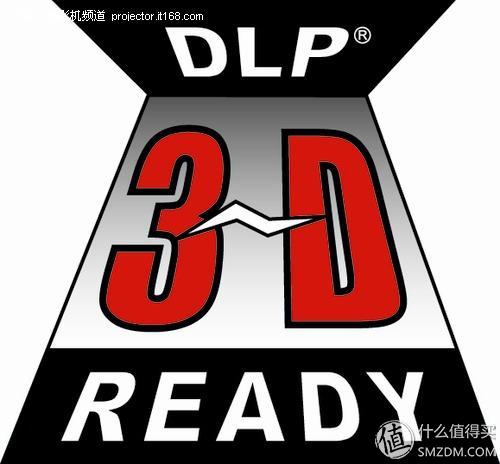
What is DLP Link? Simply put, it is a connection method used by a projector, and it can very simply and conveniently cooperate with a shutter 3D glasses to produce a 3D effect. There is no need for any settings or wires, just a shutter-type 3D glasses that also supports DLP Link.
So, I bought a HGL1 projector 3D glasses produced by nuts on Jingdong.
Many people say that the photo of this eyeglasses is a contemptuous look.
This 3D glasses is almost the same type of product as the Storm Mirror. They are small in size, free from the constraints of the wire, and can easily experience 3D effects at home. But which is better and more convenient and comfortable? We will wait to test it.
Now is the part that continues to crap:The concept of 3D is not something new. It was said twenty or thirty years ago.
At that time, “PHS Roaming the Future†as the first undergraduate fantasy novel published after the “Cultural Revolution†in China, caused a sensation after its publication. It printed hundreds of thousands of books at a time and became a very popular bestseller.

Affected by this book, China's science fiction novels have suddenly become very popular for a period of time. Although limited by the time, content and rigour are a bit simple and crude today, but the explosion of imagination is still very interesting. At the time, robots, lasers, extraterrestrial exploration, 3D (three-dimensional), or holography (the people at the time seemingly could not distinguish between the two are the most popular science fiction content).
When I was a child, I watched a lot of domestic science fiction novels and scripts. There were also comic strips. Of course, I think that the 21st century in the future should be like this in the book.
Now, in the 21st century, which has been very distant in the past, the imagination seems to be different from that of childhood.
Well, robots, there are some now, but the images in childhood science fiction seem not to be comparable.

The image of robots that I thought of as a child was like this.

And now the robot is actually like this.

Now the laser is not unusual, but it is not a machine gun laser sword laser cannon imagined as a child.

It's a laser pointer in the hands of a bear boy.
The alien expedition did not mention it. Nothing happened at all. We haven’t even completed the plan to land on the moon yet.
The only thing that I had imagined when I was a child was 3D and holography. Although they did not reach the advanced level of childhood fantasy, they were at least useless without deviation. The imagination of them was used for fun and imagined. The reality is also similar, that is, the three-dimensional image appears on the screen and even beyond the screen.
It is now a little more serious:The hologram is slightly more troublesome, and it seems difficult to experience the true holographic effect in the home environment. We still mainly talk about 3D.
Naked eye 3D is actually awkward. In reality, it is almost impossible to achieve excellent naked eye 3D. Some large-scale entertainment projects can achieve relatively good results, but certainly cannot be duplicated in ordinary families.

In fact, there were also very three-dimensional drawings that were very scary.


There is now a motion picture called naked eye 3D, which looks very sturdy, but in fact it only uses human visual illusions, but basically it can only be so short and has no practical significance.
It is now a little more serious: In general, 3D effects need to rely on glasses to help complete.
Color difference 3D glasses
The earliest 3D glasses are color-difference 3D glasses using the principle of color separation.
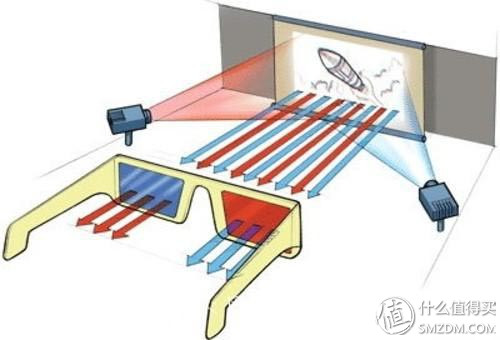
The color difference type 3D first separates the spectral information from the rotating filter wheel, and uses different color filters to filter the screen, so that one picture can produce two images, and each human eye sees different images.
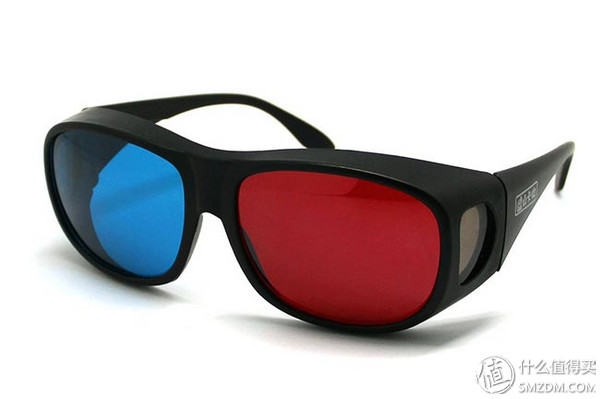
Most of the color-difference 3D glasses are red and blue, and there are also red, green, and red.

The 3D source of red and blue glasses is like this. I've always been upright, and naturally I don't recognize the person on the screen.
This method is easy to make the screen edge color cast, the effect is not very good, and color blind people, especially red and green blind people can not see.
Polarized 3D glasses
Polarized 3D technology is also called polarized 3D technology. Polarized 3D is used in English, and passive polarized glasses are used in conjunction. The effect of polarized 3D technology is better than that of color difference, and the cost of glasses is not too high. The technologies used in more cinemas are also such technologies, but such technologies have certain requirements for display devices.
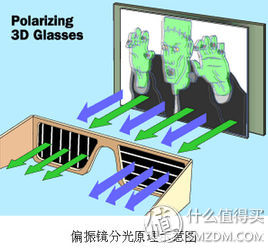
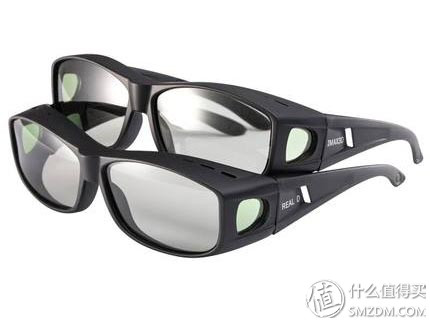
Polarized 3D glasses look generally ordinary, that is, the two lenses on the vertical polarization coating, this is called linear polarization glasses.
A small problem with linear polarization is that it must be watched horizontally when watching a movie. If you hold your head or look at your glasses, you will not be able to see clearly as you can see below.
 The commonly used circular polarization technology is now developed on the basis of on-line polarization. The principle is basically the same, but the effect is better and is not affected by the direction.
The commonly used circular polarization technology is now developed on the basis of on-line polarization. The principle is basically the same, but the effect is better and is not affected by the direction.
In fact, the polarized 3D technology does not require much for glasses, but the requirements for display devices are quite high, because such 3D methods will lose the pixels and reduce the viewing effect. If the display devices such as TVs are inferior, they are also prone to produce such drawing. phenomenon.

Shutter 3D technology
Color-difference 3D is also called color-division method. Polar-type 3D is also called light-division method. Shutter-type 3D technology is also called time division method.
From the principle of the former two types of 3D glasses, the principle of shuttered 3D technology can be roughly guessed.
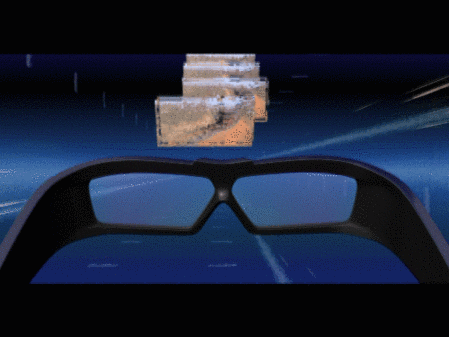
To put it bluntly, this technique means that the two eyes must see the wrong picture. The 3D glasses worn by the user can be switched between the transparent and opaque states. When the left eye receives the picture of the left eye, the right eyeglasses are The black opacity, then the left eye glass is black opaque when the right eye receives the right eye frame for the next frame. As long as the refresh rate is fast enough to make you less aware of this change, what you are seeing is a real 3D image that does not interfere with each other.
This technology relative to polarized 3D, for the display device requirements are not high, as long as the refresh rate is high enough, but the requirements for glasses is a little higher, requiring the refresh rate of glasses and the refresh rate of the display device must be the same, otherwise the screen The effect is chaotic and you can't see the 3D effect at all.
There is a variant here.
VR glasses
VR glasses, especially those that are slightly cheaper, generally use time division 3D technology, but omit the glasses and play the split screen directly. Through the cooperation of the APP and the lenticular lens, the eyes get only the images they need to see.

Time-division 3D technology does not exhibit wire drawing, but the brightness is slightly affected.
Now it's finally time to go out of the box:There is a lot of nonsense. Let's look at what the Lord is like.

Jingdong's bag.
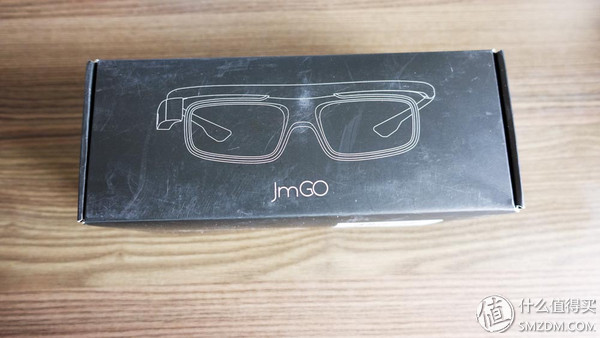
The box is full of scratches. What happened to Jingdong?

Behind the box, it's almost as if it had returned from Syria.
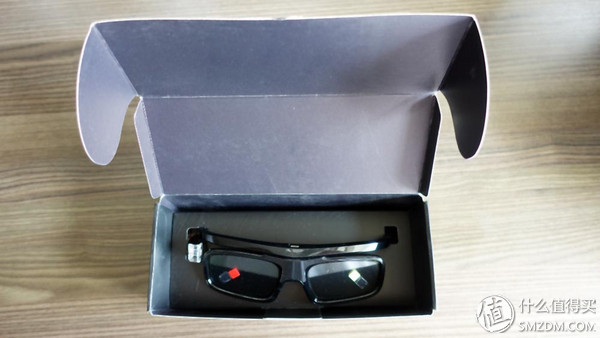
Is there a scratch in the box?
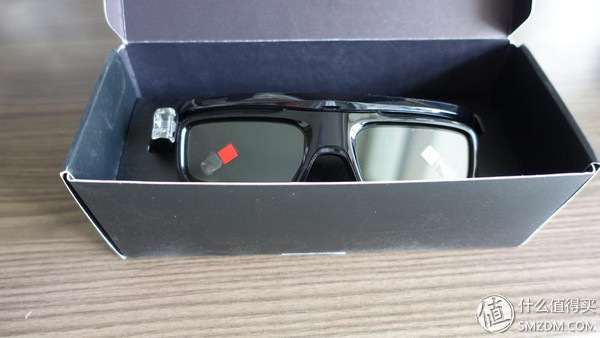
Fortunately, the glasses did not look scratched.

Glasses are inserted in the box.
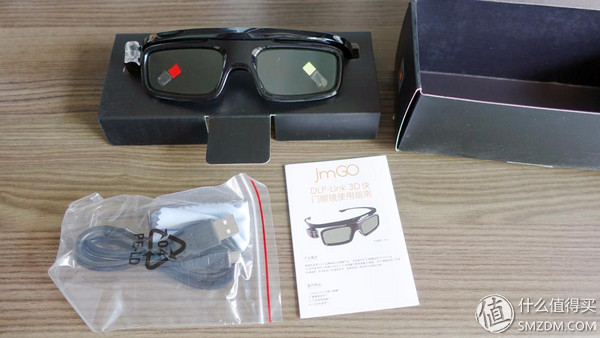
Family portrait, including charging line, glasses cloth and instructions.

One charge can be used for 40 hours.
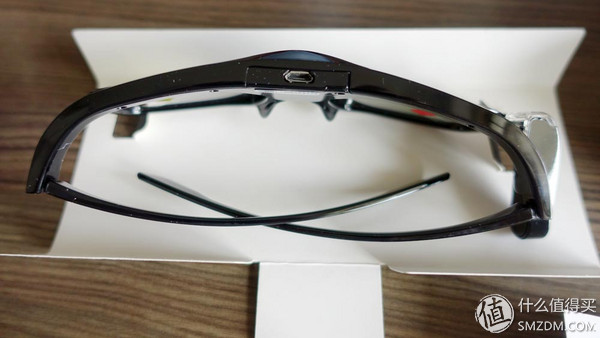
The glasses are taken down like this, above the middle nose is the charging port.
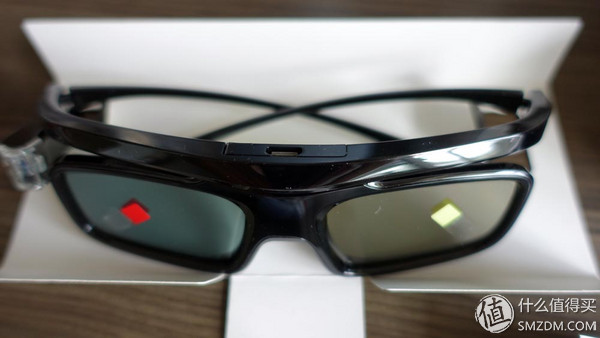
Positive, there is a protective film on the lens. What makes this glasses interesting is that the two lenses actually have the same color, but often show different colors under certain lighting conditions.
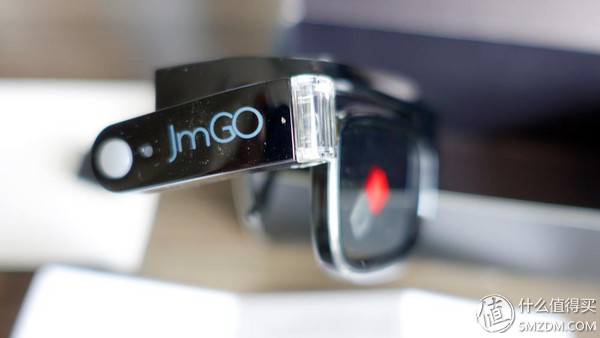
Signal receiver close-up. Behind the big circle is the switch. A little circle to the front is the indicator light.
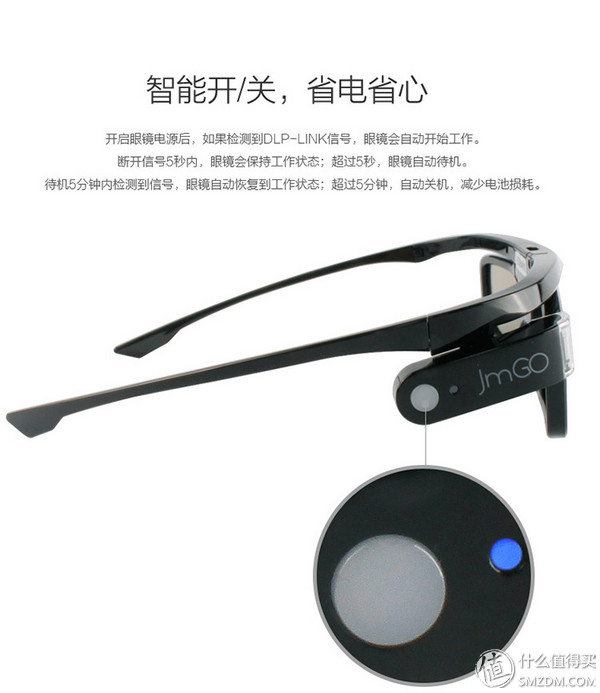
The official propaganda says it is a smart switch. The blue power indicator light on the camera can not take pictures, so take an official picture to show you good.
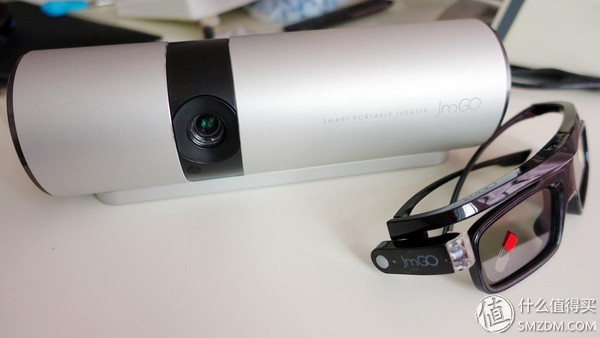
Nut family, projectors and glasses.
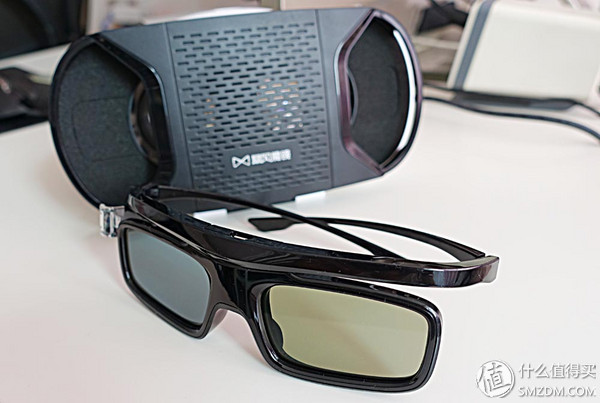
Shuttered 3D glasses and opponent storm mirror 4, saying that the lenses of the glasses have become two colors.
Now it's time to talk about what can only be said:The most embarrassing aspect of 3D product evaluation is that the 3D effect can only be seen with the eyes. Shooting is completely useless unless it uses a 3D camera.
And even if I use a 3D camera to shoot, then you still have to use 3D devices or 3D glasses to see.
For my own personal experience, I think the same 3D effects seen by 3D glasses or VR glasses are the same for the same source.
The effect is probably like this.

Basically, when the naked eye is seen, the farther away from the screen focus is, the more blurred and ghosting is. The picture seen by using 3D glasses or VR glasses is clear, and then according to the degree of correction, the picture appears a layered phenomenon, resulting in Depth of field effect.

The most obvious of these is the phenomenon of rain and snow, just like several curtains.
Of course, there are obvious differences between 3D glasses and VR glasses:
1, theater feeling. The effect of the projector seen by the 3D glasses is about 90 inches, which is very large. The effect seen by VR glasses is filling the entire field of vision and is huge.
In this respect, VR glasses win, 0:1
2, sharpness. The visual field seen by the 3D glasses is relatively small, but it is relatively clear, and the visual field of the VR glasses is too large, so that the pixels can be seen.
In this regard, 3D glasses win. 1:1
3, brightness. 3D glasses will lose a little brightness due to the working principle, VR glasses will not.
In this regard, VR glasses win. 1:2
4, wear comfort. Both glasses do not affect the wearing of glasses. However, 3D glasses are relatively light and VR glasses are slightly bloated and heavy.
In this regard, 3D glasses win. 2:2
5, immersed feeling. Basically, 3D glasses can only watch 3D video, and VR glasses can also use head control operation to watch panoramic videos and play VR games.
In this regard, VR glasses win. 2:3
6, ease of use. The 3D glasses can be used with the switch turned on and do not require any adjustment settings. VR glasses have to open to adjust a lot of things, relatively troublesome.
In this regard, 3D glasses win. 3:3
7, fever. There is no fever during the operation of the 3D glasses. When the VR glasses are used, the mobile phone is very hot, and the power consumption is very fast.
In this regard, 3D glasses win. 4:3
8, vertigo. There is no vertigo in watching 3D glasses. There is nothing strange about watching a movie.
The sense of vertigo in VR glasses is very obvious. The original words in my review are:
Very dizzy, the official is recommended not to wear more than 30 minutes each time. I once watched a 90-minute movie at a time. Then in the next 2 hours, the road was not straight. I sat in a chair and felt like I was riding a horse on the vast expanse of Hulun Buir. On the prairie.
The final score of 5:3, 3D glasses won the championship.
If you simply want to see 3D video, 3D glasses are better than VR glasses, and the key is not to faint.
This is the key to family entertainment. After all, the young people are faint, but if the old man or the child faints and falls, it will be troublesome.
And VR glasses can only be worn by one person to play, 3D glasses can buy more than a couple of the whole family lively together.
Of course, VR glasses still have a lot of features that 3D glasses can't achieve, and 3D glasses themselves are useless and must be used with a projector or TV.
In general, TVs and projectors that support 3D functions, especially those with relatively high prices, will basically come with one or two pairs of 3D glasses.
Tips: If your home purchases 3D-capable TVs and projectors that don’t come with 3D glasses or don’t send them in enough quantities, you need to look at the type of 3D glasses that the product uses.
Currently, projectors that support 3D function in the market basically use shutter-type 3D glasses. However, the 3D-enabled TVs in the market are divided into shutter-type 3D and polarized 3D. It is necessary to clarify the re-buy. But also to see the corresponding parameters, most of the same type of 3D glasses can be universal, but there are also individual manufacturers deliberately created a dedicated brand of glasses for this brand.

Bitcoin mining machines are one way to obtain bitcoins. Bitcoin is an online virtual currency created by open-source peer-to-peer software. Instead of being issued by a specific currency institution, and produced by the massive computation of a specific algorithm, the Bitcoin economy uses a distributed database of nodes throughout the P2P network to identify and record all transactions. The decentralized nature and algorithm of P2P can ensure that it is impossible to artificially manipulate the value of bitcoin by producing a large number of coins.
Any computer can become a mining machine, but the returns will be low, and it may not mine a single bitcoin in a decade. Many companies have developed specialized Bitcoin mining machines with special mining chips that are tens or hundreds of times faster than normal computers.
Currency system by the user (the user through the key control wallet), trade (trade will be broadcast to the whole currency network) and miners (generated by competition calculation agreed on each node of the chain block, block chain is a distributed public authority books, contains the currency network of all the transactions happened)
Bitcoin miners manage the Bitcoin network by solving the problem of proof-of-work mechanisms with a certain amount of work -- confirming transactions and preventing double payments. Because hashing is irreversible, finding the number of random adjustments required to match is difficult, requiring a trial-and-error process that can predict the total number of times. This is where the proof-of-work mechanism comes into play. When a node finds a solution that matches the requirement, it can broadcast its result to the whole network. Other nodes can then receive the newly solved data block and check whether it matches the rule. If the other nodes calculate the hash value and find that the requirement (the operation goal required by Bitcoin) is satisfied, then the data block is valid and the other nodes accept the data block.
Bitcoin Mining Machine:S19 Pro Hyd Asic Miner,S19 Pro Hyd Antminer Bitmain,S19 Hyd Bitmain Antminer,s19j pro antminer bitmain,whatsminer m50s,etc.
Bitcoin Mining Machine,Antminer S19j Pro,bitcoin Miner,btc mining machine,S19 Pro Hyd
Shenzhen YLHM Technology Co., Ltd. , https://www.apgelectrical.com
